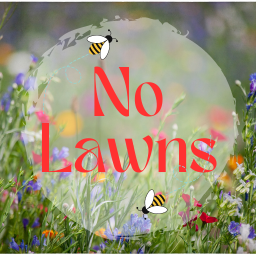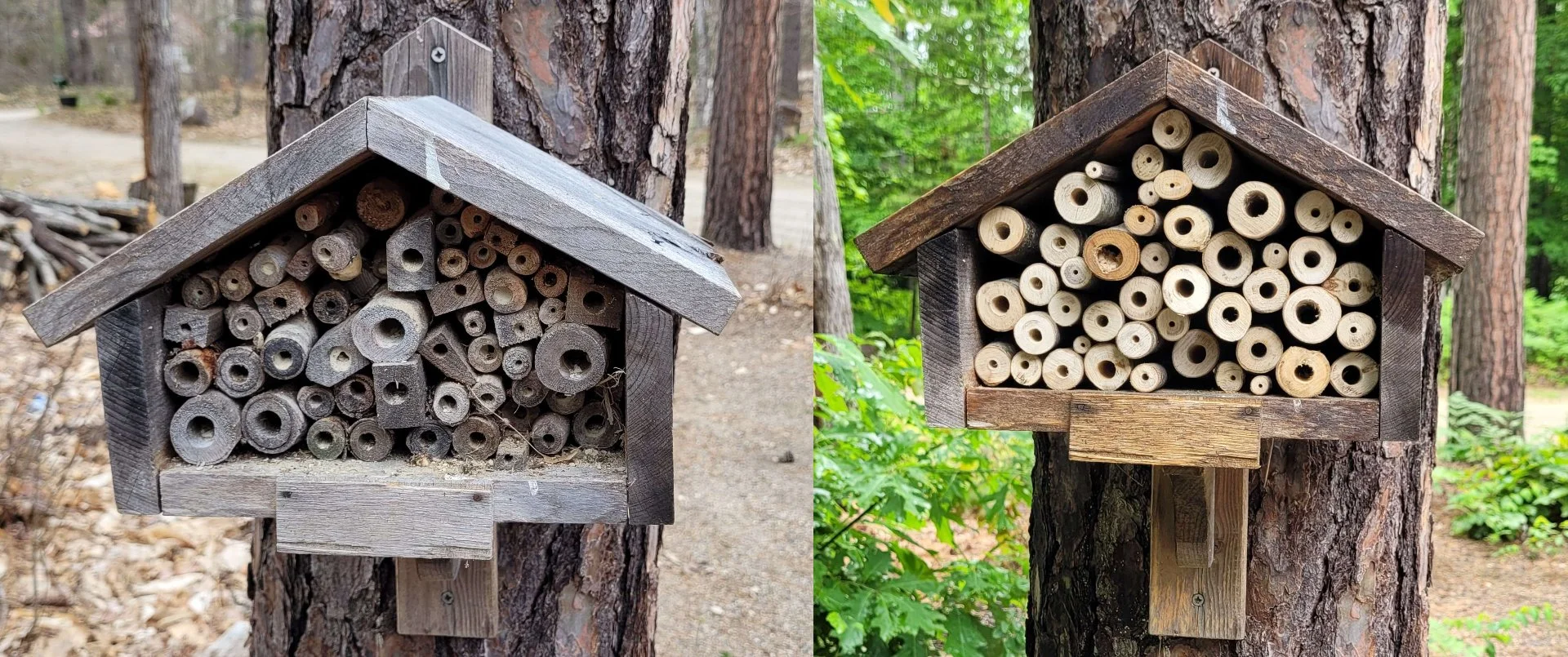
I posted awhile back after making a home for solitary bees, sharing that it had gotten some use. Its important to replace the sticks annually to prevent parasites from being passed from bee to bee as holes are reused.
Thanks to some winter storms, we had lots of downed branches to clear, so I had no shortage of sticks available for use as future bee housing:
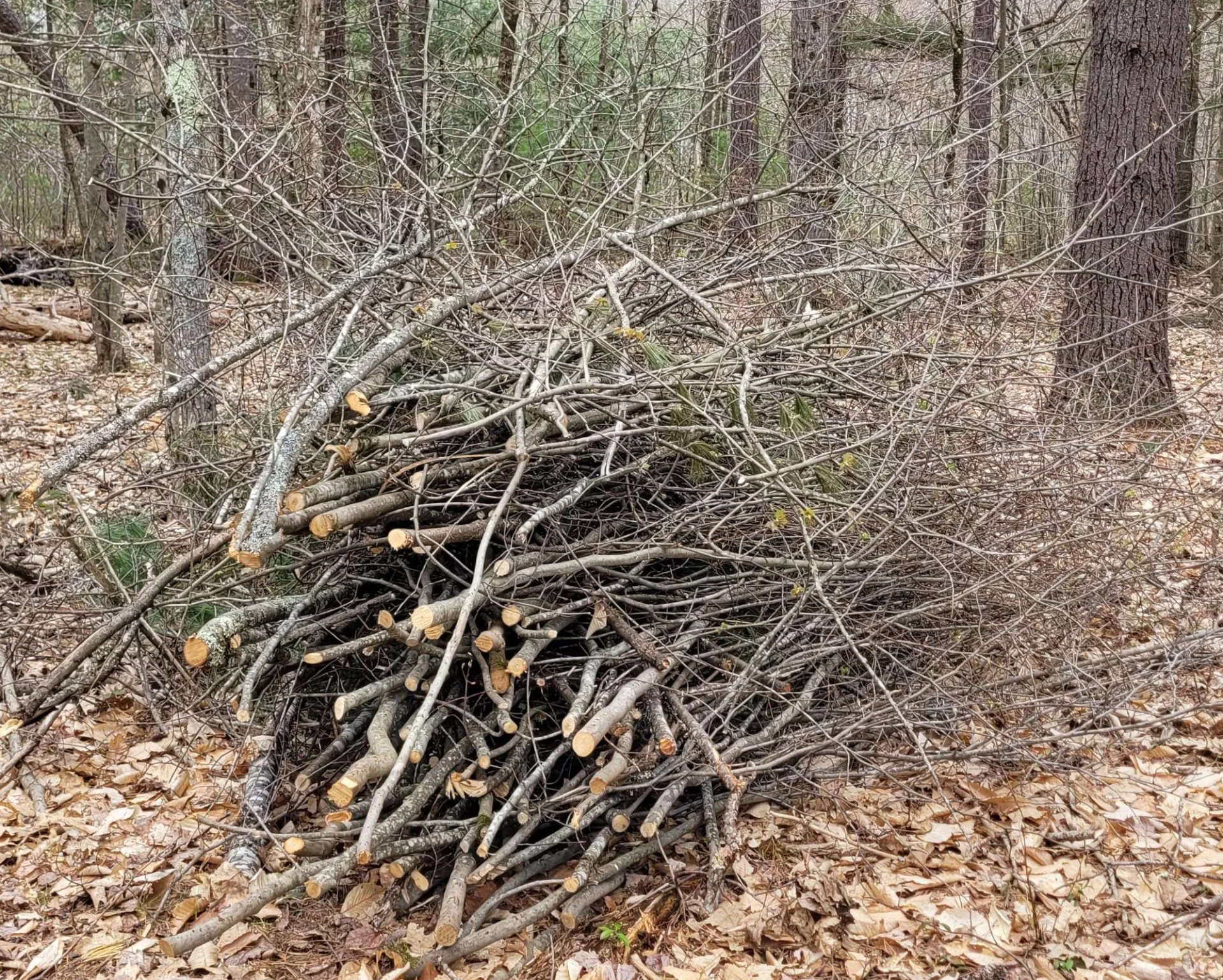 (One pile of many)
(One pile of many)
The holes need to be between 5" and 6" deep, so I started cutting the sticks into 6.5"-ish lengths.
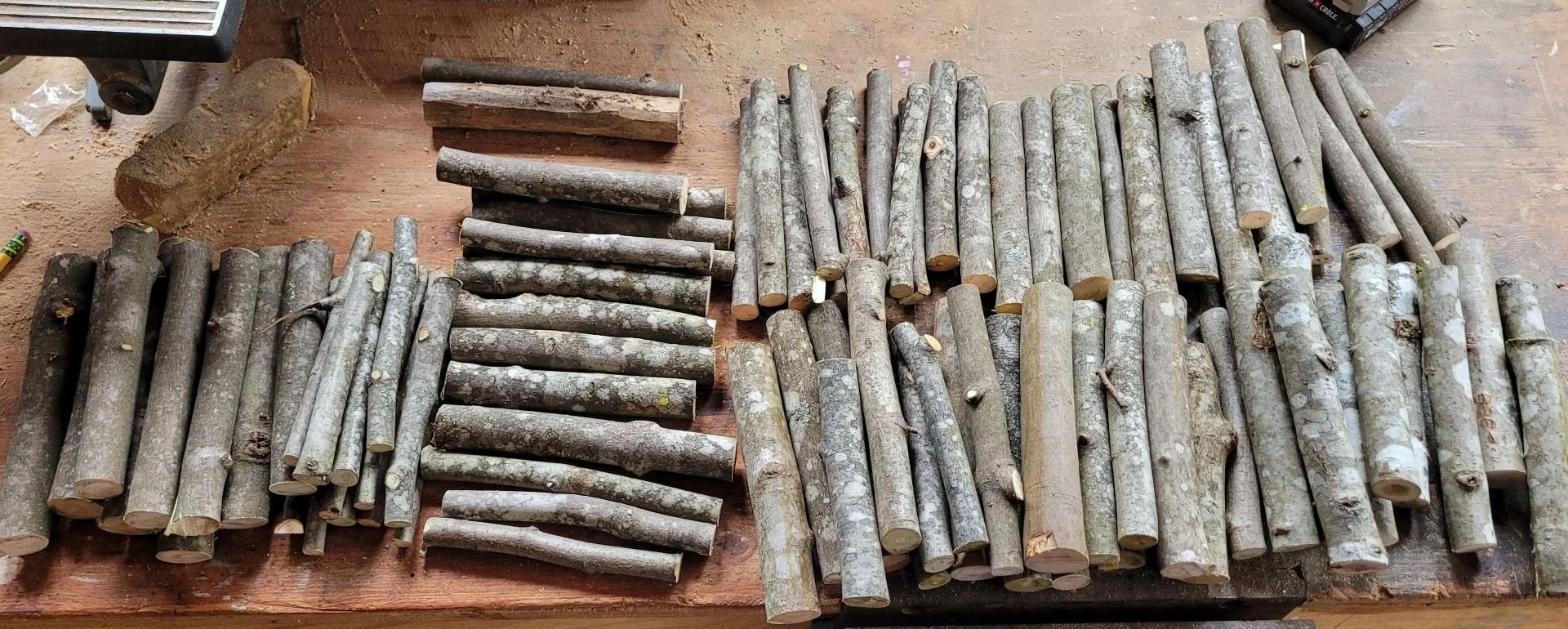
This doesn’t look like much but it took a lot of eight-foot branches to make these piles.
The next step was drilling holes. Different size bees need different diameter holes, so I read a few guides and picked out a range of drill bits between a metric #2 and a full half-inch (I don’t think solitary bees care about unit standardization) to make sure any potential tenants can find a cozy caliber to call home.

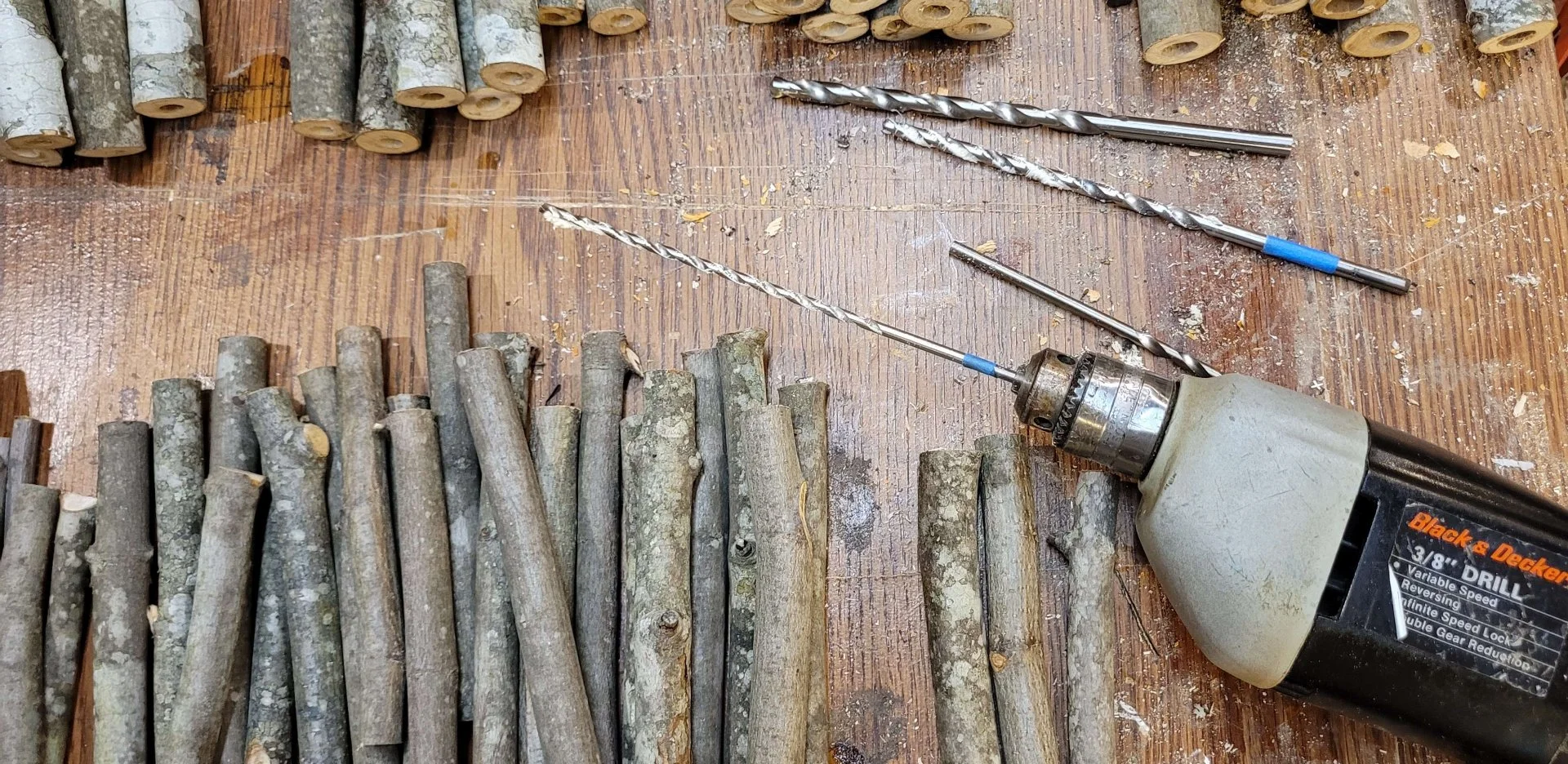
I used the drill press to start the holes then used a set of extra long metric bits in a screwgun to get the full length the bees need
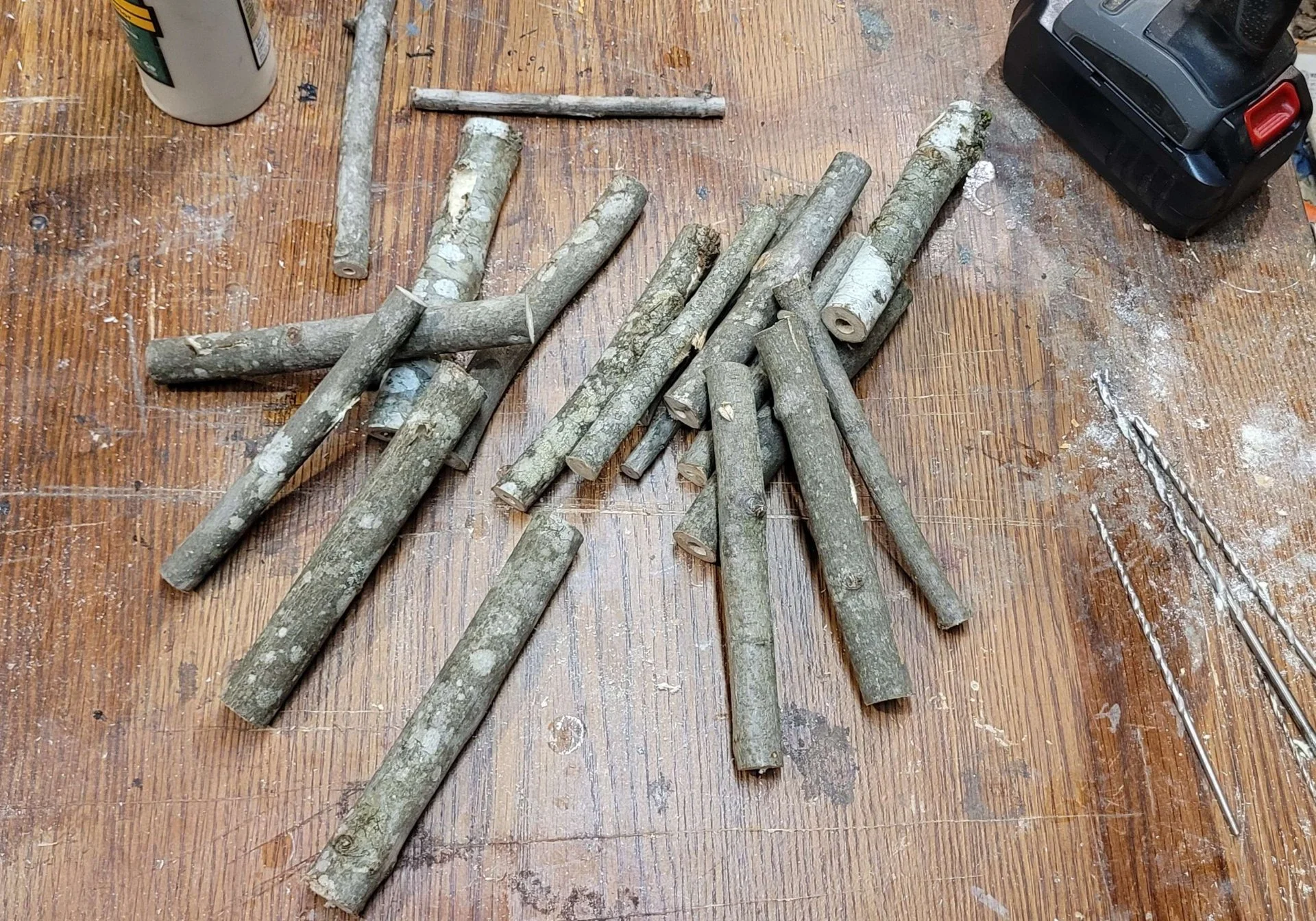
This didn’t always go perfectly. I didn’t break any bits, but sometimes the holes were crooked enough to punch through the side of the stick and I’d set them aside.
Then I just had to bag up what I’d made and replace the sticks in the bee house:
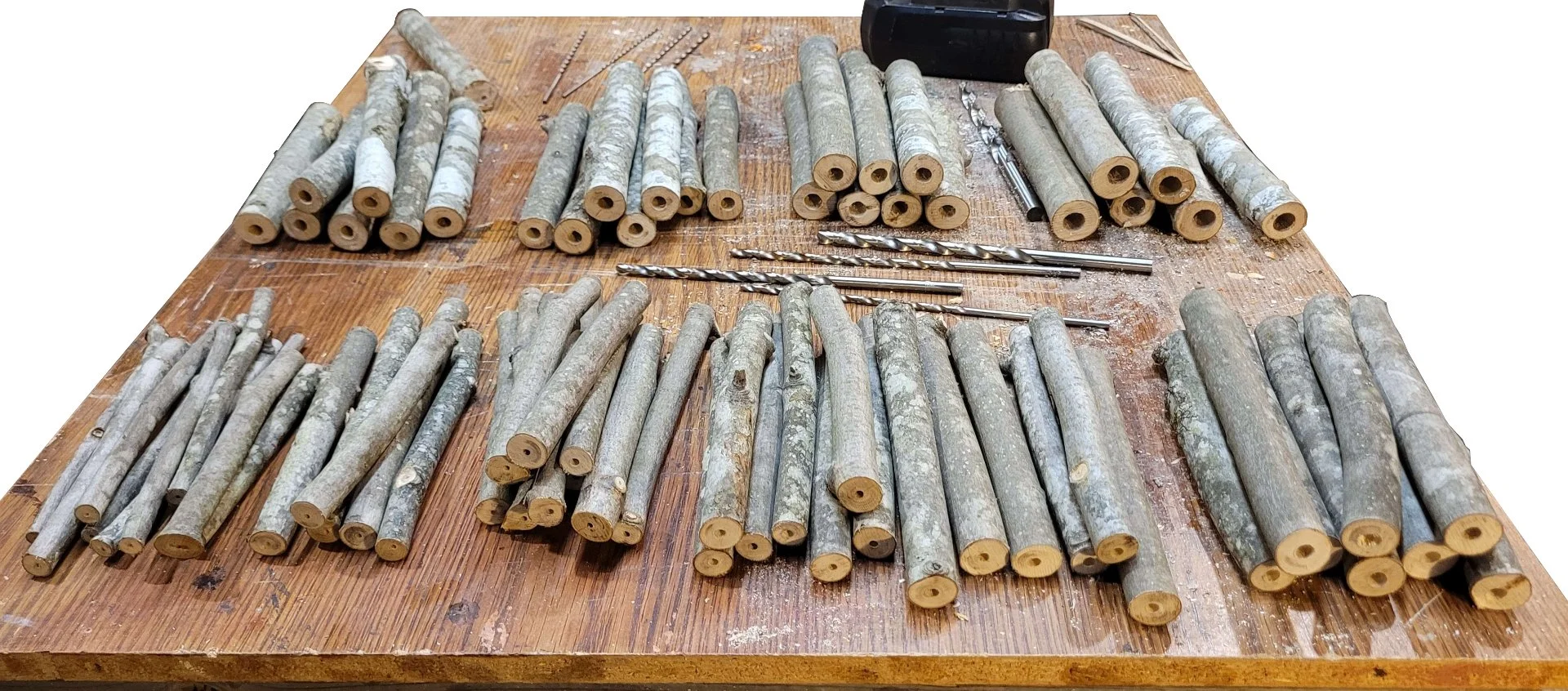
(Background omitted because it’s easier than tidying the shop.)
I’d thought I’d made enough sticks for two years, but it took almost all of them to fill the bee house. Glad I prepared as many as I did.
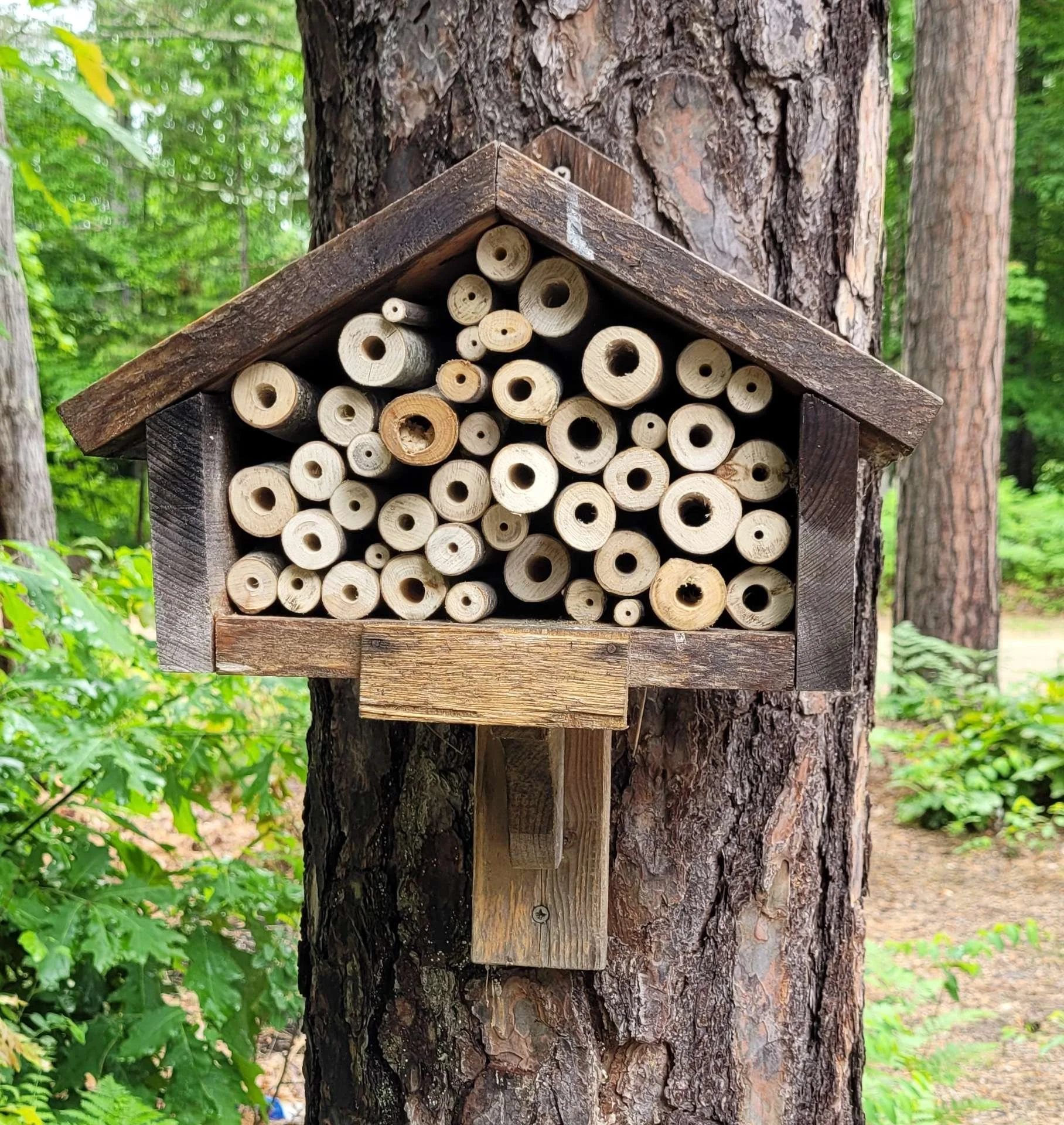
I think I’d call that move-in ready.
Thanks for posting such a useful guide! I’m inspired to build one also. I notice the lack of screen. So there’s been no problem with other creatures raiding the sticks? ('Am wondering because we have hungry jays, squirrels and rats in our area.)
So far, we haven’t noticed any issues with birds or other critters. If we do, I’ll add a screen, but I didn’t want to risk making things easier for spiders, or helping water splash the holes if I didn’t have to.
We did have carpenter ants climb up behind the sticks so I need to figure out our solution to that. I’m really hoping thats new and that they didn’t get into the bee holes or take any eggs. The tree seems healthy so I’m thinking the bee house was what appealed to them?
I’ll update if I learn anything else.
Nice guide, thanks for sharing! I’m thinking if it would be necessary to sand the splinters a bit to avoid wing damage? I recall seeing paper tubes being sold as insect hotel building material with this as reason. But I’m not sure if that’s true or just marketing bs (so hard to tell sometimes).
I’ve seen similar, I’d never had trouble just running the drill till the sides were smooth before, but some of these sticks were still pretty live, and no matter how long I let the drill cut into the sides, or what speed I used, it still produced fluffy sawdust and left those splinters along the inside of some. I’d been planning to wait a year on those and drill them again but it took more sticks than I’d planned to fill it. For what it’s worth, they’re pretty soft, but they might harden as they dry? If it’s a legit risk for the bees I’ll definitely pull those tubes. I think cardboard tubes are probably the better way long term, certainly they’re less work which would make replacing them easier. I just prefer to make things myself when I can.

